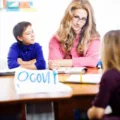Introduction
The National Day for Truth and Reconciliation, observed on September 30th, is a significant moment for Canadians to recognize and commemorate the legacy of residential schools. Established in 2021, this day aims to honor the survivors, their families, and communities who have been affected by the residential school system, and to promote education and awareness about this dark chapter in Canadian history.
The Importance of Truth and Reconciliation
The Truth and Reconciliation Commission (TRC) was established to document the historical abuses faced by Indigenous peoples in residential schools. The TRC’s final report, released in 2015, included 94 Calls to Action, urging all levels of government, communities, and institutions to work together to repair the harm caused. The National Day for Truth and Reconciliation is one of these Calls to Action, emphasizing the need for collective reflection and action.
History of Residential Schools in Canada
Residential schools were government-sponsored religious schools established to assimilate Indigenous children into Euro-Canadian culture. Over 150,000 First Nations, Métis, and Inuit children were forcibly removed from their families and communities to attend these schools from the late 1800s until the last school closed in 1996. Many children experienced physical, emotional, and sexual abuse, leading to intergenerational trauma that still affects Indigenous communities today.
How to Participate in National Day for Truth and Reconciliation
There are various ways to observe the National Day for Truth and Reconciliation:
- Wear Orange: Orange shirts symbolize the stripping away of culture, freedom, and self-esteem experienced by Indigenous children over generations. Wearing orange shows solidarity and support for survivors and their families.
- Educate Yourself: Take the time to learn about the history of residential schools and the ongoing challenges faced by Indigenous communities. Resources such as books, documentaries, and online materials can provide valuable insights.
- Participate in Community Events: Many communities host events such as ceremonies, marches, and educational workshops. Participating in these events helps build a collective understanding and commitment to reconciliation.
- Support Indigenous Organizations: Contributing to Indigenous-led organizations and initiatives can help support the healing and empowerment of Indigenous communities.
Government and Institutional Roles
Governments and institutions play a crucial role in advancing reconciliation. This includes implementing the TRC’s Calls to Action, addressing systemic inequalities, and fostering respectful relationships with Indigenous peoples. By prioritizing the voices and experiences of Indigenous communities, meaningful progress towards reconciliation can be achieved.
Frequently Asked Questions
What is the significance of the color orange on this day?
Orange shirts represent the experiences of residential school survivors, reflecting the loss of culture, identity, and self-worth experienced by Indigenous children. The color was inspired by survivor Phyllis Webstad’s story of having her new orange shirt taken away on her first day at residential school.
How can non-Indigenous people contribute to reconciliation?
Non-Indigenous people can contribute by educating themselves about Indigenous history and the impacts of colonialism, supporting Indigenous-led initiatives, and advocating for policies that address systemic inequalities. Active listening and allyship are also key components of meaningful participation.
Are there any online resources to learn more about residential schools?
Yes, numerous resources are available online, including the National Centre for Truth and Reconciliation’s website, which offers educational materials, survivor testimonies, and the TRC’s full report. Other resources include online courses, documentaries, and Indigenous-led media.
Is the National Day for Truth and Reconciliation a statutory holiday?
As of 2021, the National Day for Truth and Reconciliation is a federal statutory holiday in Canada. It provides an opportunity for Canadians to engage in reflection, education, and actions towards reconciliation.
How can schools participate in this day?
Schools can participate by incorporating lessons on Indigenous history and the legacy of residential schools into their curriculum. Activities such as hosting guest speakers, organizing classroom discussions, and participating in community events can also enhance students’ understanding and engagement.









